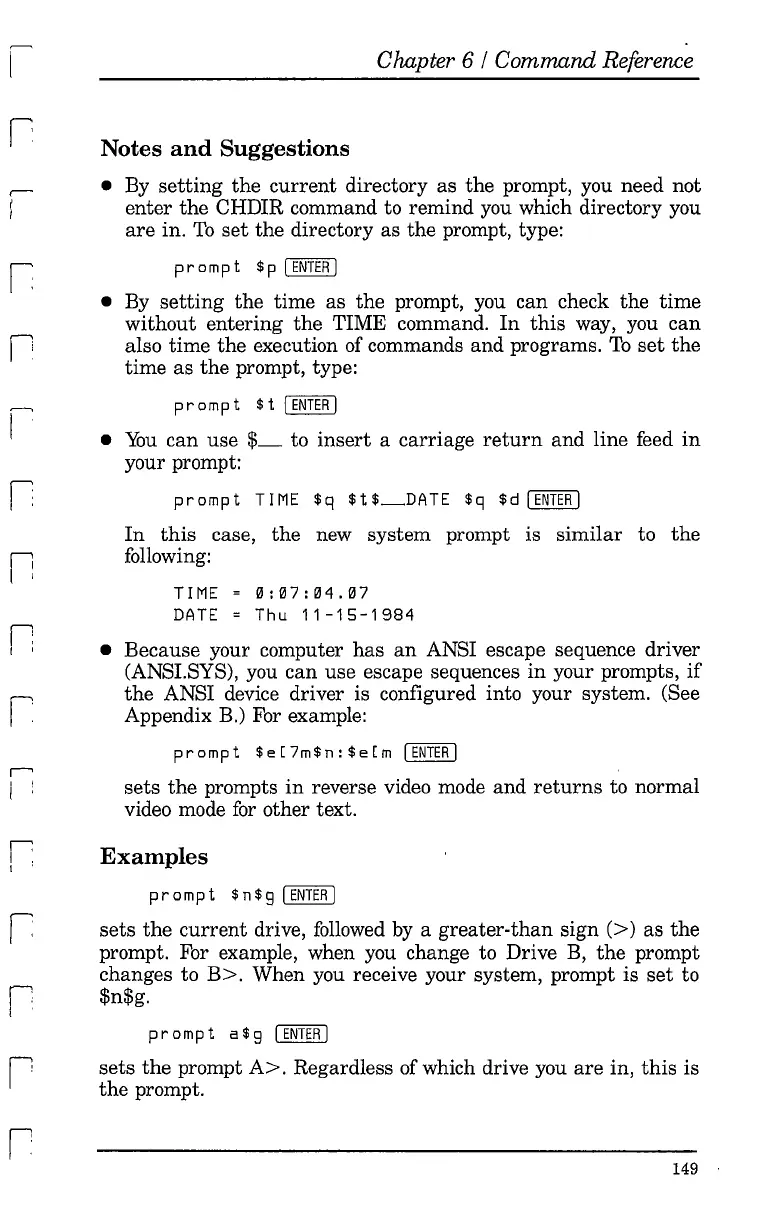r:
I '
n
I I
n
I '
I'
I '
r:
I
r
I '
i
Chapter 6 / Command Reference
Notes
and
Suggestions
• By
setting
the
current
directory as the prompt, you need not
enter
the
CHDIR command to remind you which directory you
are
in.
To
set
the directory as
the
prompt, type:
pro
mpt $ P I
ENTER
J
• By
setting
the
time as the prompt, you can check the
time
without entering
the
TIME command.
In
this
way, you
can
also time
the
execution of commands and programs.
To
set
the
time as
the
prompt, type:
promp t $t I
ENTER
I
•
You
can use
$_
to
insert
a carriage
return
and line feed
in
your prompt:
prompt
TIME
$q
$t$_DATE
$q
$d I
ENTER
I
In
this
case,
the
new system prompt is
similar
to
the
following:
TIME
=
~:~7:~4.~7
DATE
= Thu
11-15-1984
• Because your computer has
an
ANSI escape sequence driver
(ANSLSYS), you can use escape sequences
in
your prompts,
if
the
ANSI device driver is configured into your system. (See
Appendix B.) For example:
prompt
$e[7m$n:$e[m
I
ENTER
I
sets
the
prompts
in
reverse video mode
and
returns
to normal
video mode
for
other text.
Examples
pro
mpt
$n
$9 I
ENTER
J
sets
the
current
drive, followed
by
a
greater-than
sign
(»
as
the
prompt. For example, when you change to Drive B,
the
prompt
changes to
B>.
When you receive your system, prompt is
set
to
$n$g.
prompt
a$g
I
ENTER
J
sets
the
prompt
A>.
Regardless of which drive you
are
in,
this
is
the
prompt.
149
